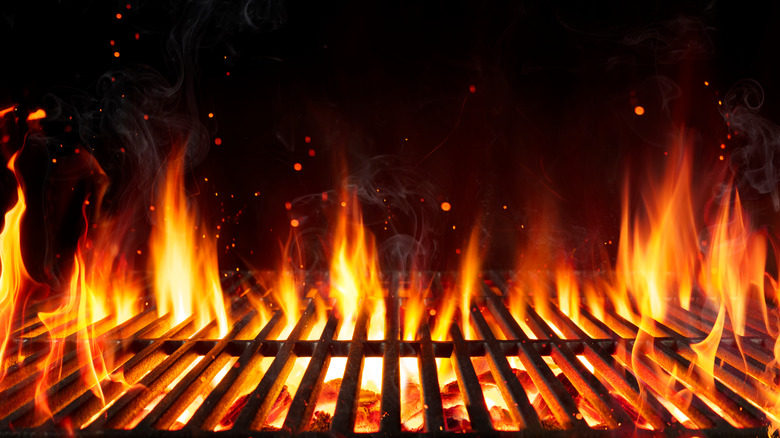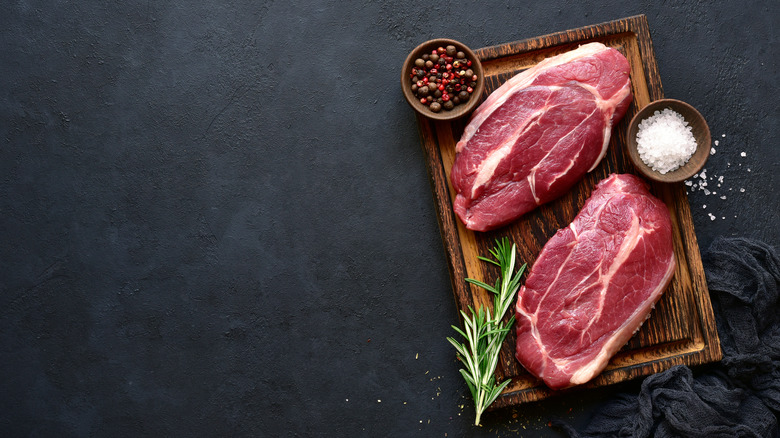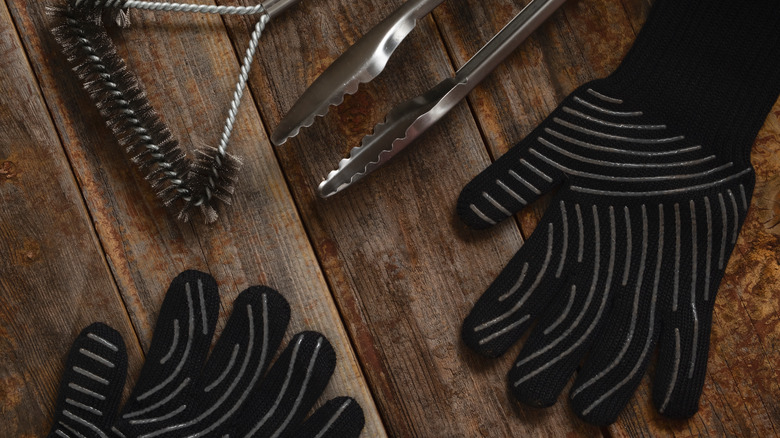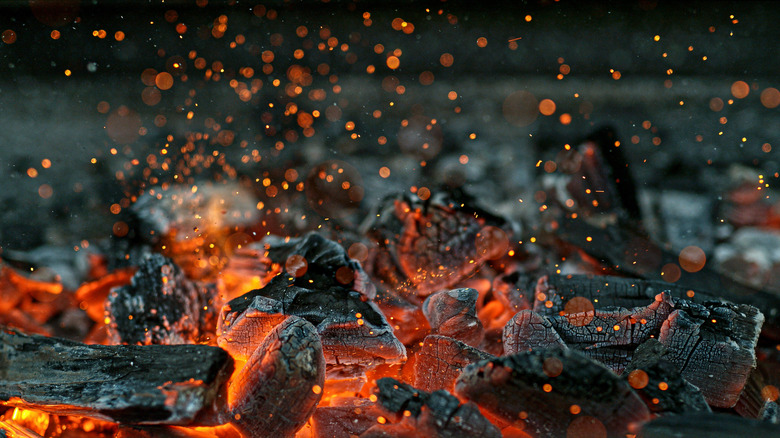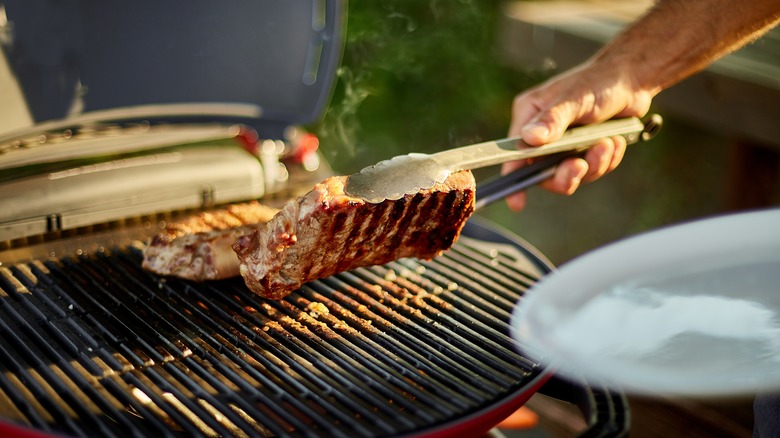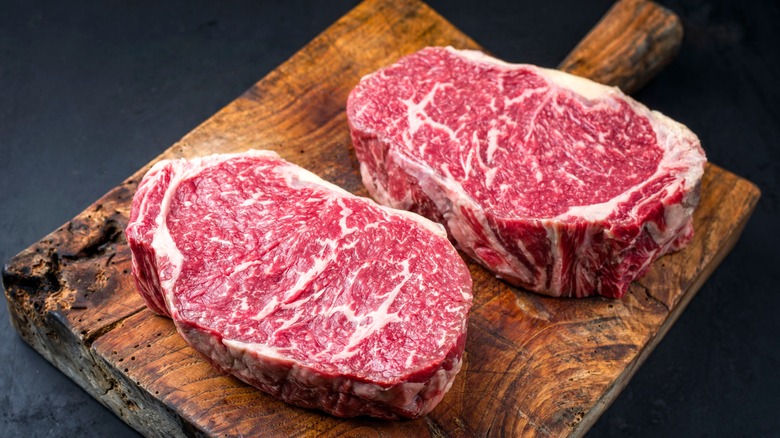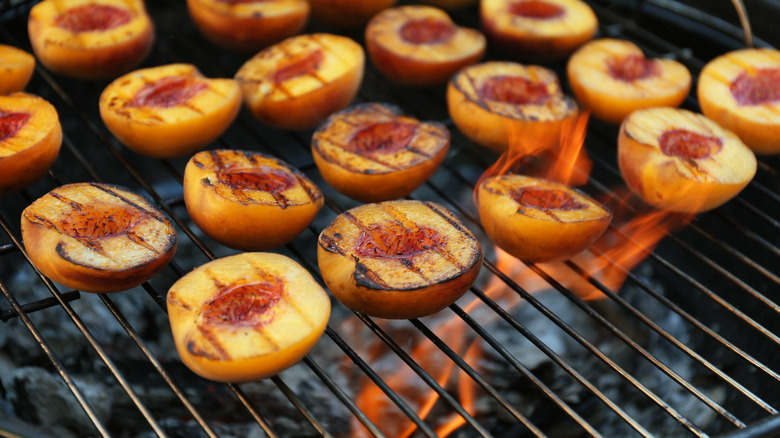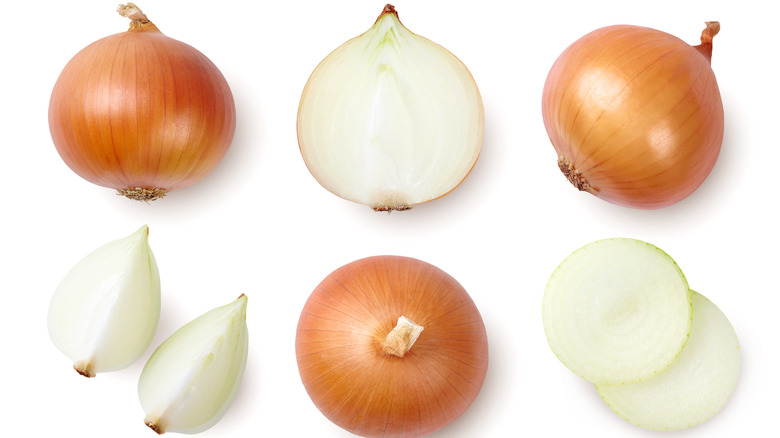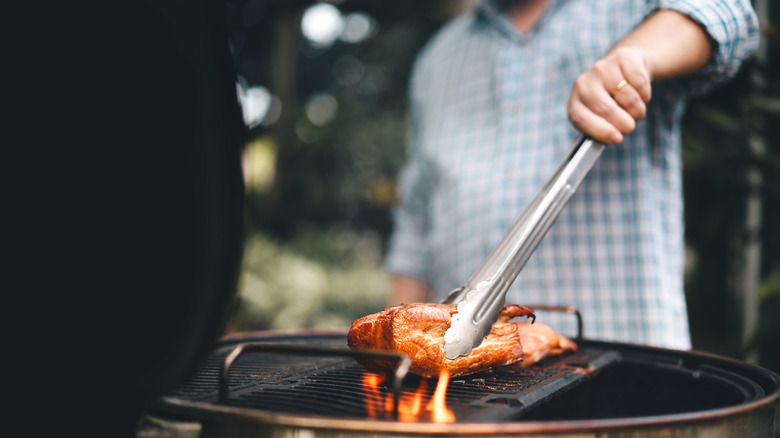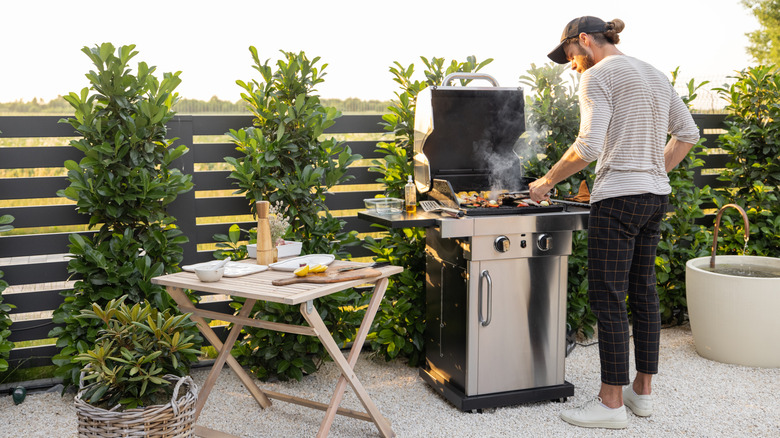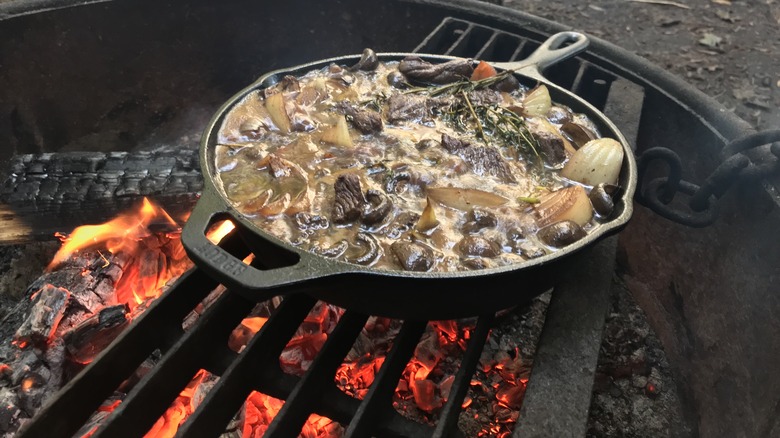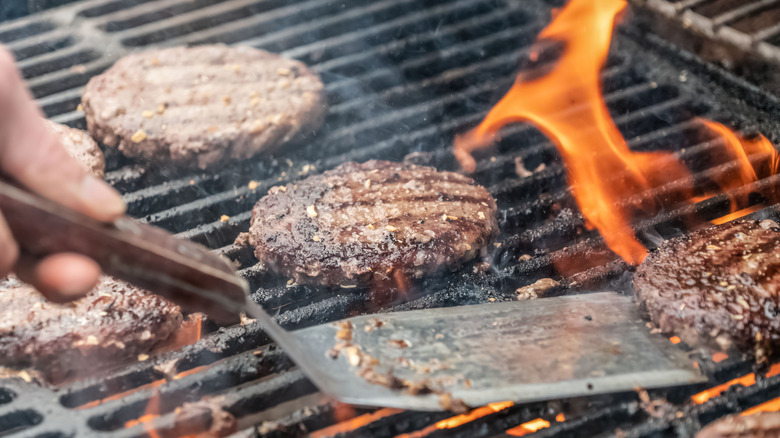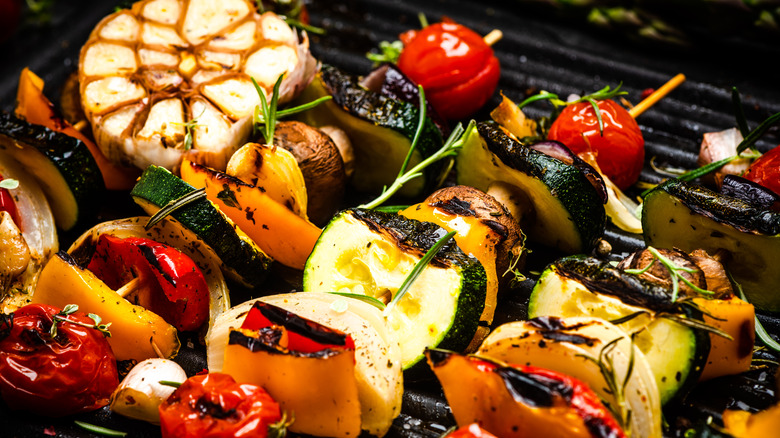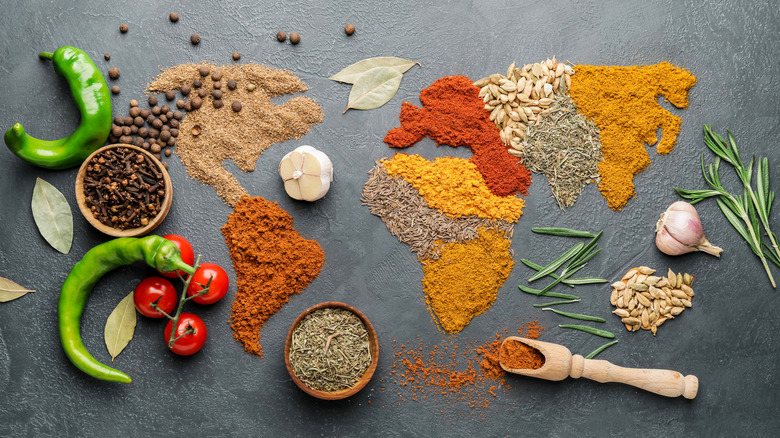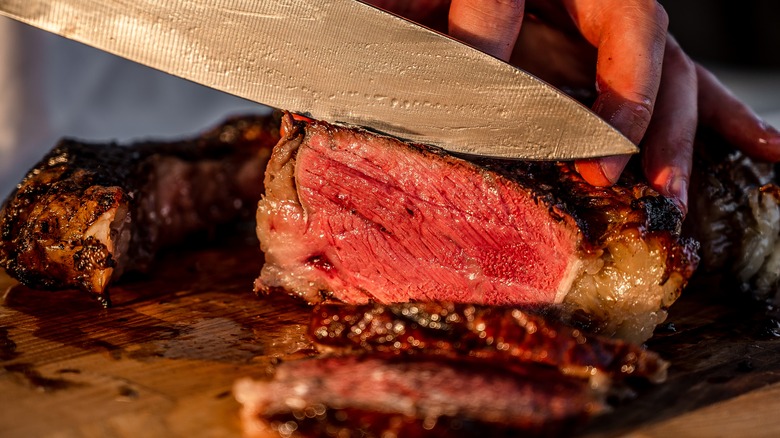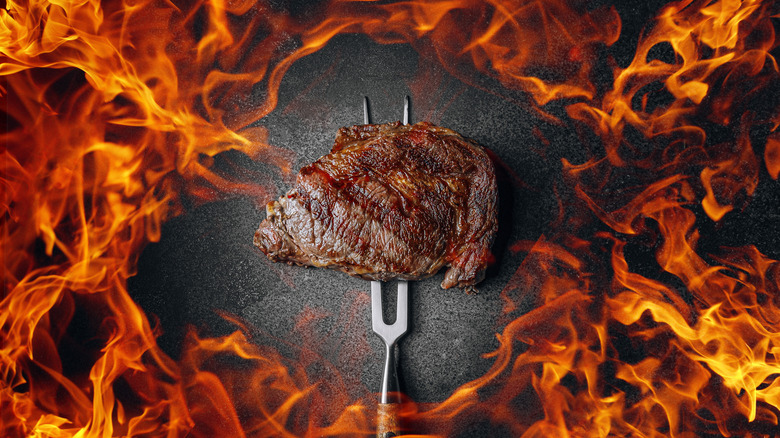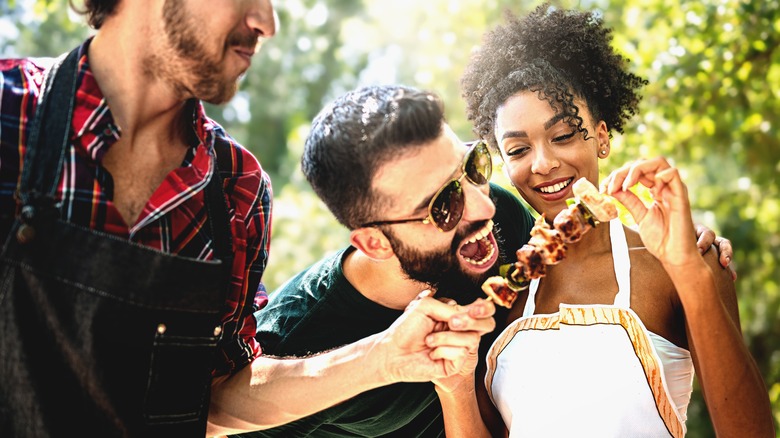16 Essential Grilling Tips & Tricks
It's time to break that grill out of its winter storage and roast the day away with everyone's favorite warm-weather pastime: cooking over an open flame. Nothing marks the return of long days and short nights quite like some flame-kissed tidbits fresh from the grill, preferably in the company of food-loving family and friends.
From hot dogs to steak to all the grilled fruit, vegetables, cheeses, and meats in between, there are few things that can get mouths watering quite like something that's been sumptuously seasoned and seared. A perfectly-charred piece of just about anything is downright irresistible, especially if it's been properly blackened over a piping-hot grate. And, by knowing how to avoid grilling mistakes that most people make, you can sidestep all the pitfalls preventing you from becoming a veritable pitmaster. So, grab your gloves and ready your grill, because it's time to learn the tips and tricks that can take a good grill session and make it a great one.
1. Let meat rest before it grills
Here's the thing — letting your meat rest at room temperature for at least five minutes before it hits the grill may go against every food safety instinct you have, but it is an incredibly important step for any cut of cow, chicken, or pork. And no, the meat will not go bad from sitting on the counter for a little bit, but it will give it time to acclimate to room temperature. The end result? A deliciously grilled piece of meat that is both significantly more texturally pleasing and will also have a more consistent and predictable internal temperature.
That said, be sure that the meat's resting place meets a few basic criteria. Firstly, it must be protected from bugs, pets, children, dust, and anything else that may prove pesky if it gets its hands, paws, or such on the meat. Secondly, do not rest any meat in direct sunlight or in exceedingly warm temperatures — resting at room temperature means exactly that: resting at room temperature. And, most importantly, don't let the meat rest for too long or you run the risk of spoiling it.
2. Invest in grilling equipment
When it comes to becoming a grade-A gourmand of all things grilled, stocking up on all the best grilling tools is essential. That doesn't mean breaking the bank and shelling out for every fancy grilling gadget and gizmo under the sun, but it does mean doing a little bit of research and keeping an eye open for good deals on equipment. For the most basic grilling, the essentials are a grill itself, gloves, a torch, tongs, and a thermometer. If the grill is propane-powered, you will (quite obviously) require propane. And, if the grill operates on charcoal, then coals and kindling are a must. Also essential: a cleaning kit including a wire brush to keep the grate looking great.
After the basics are covered, it's time to search out more fun add-ons for amping up the quality of your bbq. A wireless thermometer to gauge internal meat temperature, a collection of cast iron pans, brushes for sauce, a spray bottle (for misting the meat), a grilling cage, shredding claws — the list goes on and on.
3. Consider your wood and coals
In the world of grilling, there's one dispute as old as the first gas-powered grill itself — what's better, gas grills or cooking with charcoal? The answer to this question is, ultimately, quite simple: whatever you enjoy the most is best for you and what other people enjoy is what's best for them. Regardless of how one prefers their grate to be heated, understanding how to use wood and charcoal effectively can only prove useful when it comes to charring up a classic cut on the grill.
Grilling with different wood types requires a basic knowledge of their various qualities and flavors. But, as much as studying all the kinds of wood online may possibly help, the best way to prepare for wood-to-meat pairing at home is to conduct some field research. Don't be afraid to strike out to your local smokehouses and supermarkets alike to pick up examples (you know, for science). From oak to cherry, hickory, or mesquite, there are a ton of fun flavors to imbue in meat.
4. Keep it clean
This should go without saying but, given the state of some grills out there, it still needs to be said: just because that grill is an outdoor piece of cooking equipment doesn't mean it doesn't need a good scrubbing. Yes, the flame burns a lot of bacteria off, but that does not negate the fact that caked-up layers of food stuck on a grill is downright unappealing.
Considering how simple it is to take a wire brush to the grate, dump out old ashes, and give the grill a good and proper scrubbing a couple of times a year, there's no excuse for a dirty grill. The same can be said for any and all grilling equipment, including tongs, spatulas, and the wire brush used for cleaning the grill too while you're at it. Also, be sure to clean any tools and plates that touched raw meats before touching the cooked meat — it's not as though the utensils grill alongside the chicken, after all, and that means the bacteria is still living strong on those tongs.
5. Trim the fat
Fat is flavor — this is an undisputed truth in the world of cooking. But, in the case of grilling, there is a point of diminished return when it comes to fats. Though it may be hard to believe that more delicious fats, especially in a steak or a rack of ribs, can ever be bad, here's why that is not the case: excess fat, be it a generous rub of olive oil or an untrimmed fat cap on a roast, will get hot, melt, and drip from the grate and straight into the flames below.
But what exactly happens when grease hits a hot open flame? Well, the fat burns hot and fast (as fat does) and causes a flare-up, effectively burning your pork chop, for example, in its own fat cap. While a little extra flame won't hurt, too much flare-up action can cause whatever is cooking to become a little more blackened and charred tasting than strictly desirable. So, make sure to trim excess fat before grilling. Don't worry about wasting the trimmings since that fat cap can be rendered, frozen, or used to prep the grill. Waste not, want not.
6. Don't forget the fruit
Grilled fruit is an underrated classic that can carry a char as well as any meat. This fruit fact is simultaneously well-known yet often forgotten in many (if not most) meals cooked out on the grill. But, when there are so many options out there for adding a refreshing fruity flavor to the 'que, it's almost a crime to leave these sweets to the side ... especially for them to end up eaten ungrilled and cold at a later date.
From slabs of succulent pineapple on skewers to Georgia peaches with a perfectly charred crosshatch (served with a side of vanilla ice cream and a dash of cinnamon, of course), many fruits can take the heat when it comes to grilling. The sweet and savory combination of smoke, salt, and fruit on a grill will melt even the hardest meat-loving heart — almost as well as it melts across the tongue.
7. Clean the grill with an onion
One of the oldest tricks in the book when it comes to grilling is to use an onion to deglaze the grill. Not only will this process lift any remaining bits and pieces from the grill's last use that the wire brush cleaning may have missed, but it will also impart a delicious charred onion flavor in the process. And, to make onion-cleaning even more appealing, it's incredibly easy, affordable, and highly effective.
Here's how you deglaze a grill's grate with an onion: Simply take a halved, peeled onion and rub it up and down along the grates of the grill. This trick works best if applied to a hot grill that is already relatively clean. In doing this, excess materials are removed from the grate and a very mild residual flavor of onion will accompany the dish. To avoid wasting the onion, just cut off the dirty end and grill the rest up alongside your main dish.
8. Use tongs, not prongs
Nothing is sadder than receiving an invitation to a grill n' chill, showing up with a seriously excellent selection of sausage for the occasion, watching the most deliciously plump-looking dogs hit the flames as they cook to near perfection, blistered skin stretched tight over perfectly juicy meat — then, right as you think it can't get any better, someone comes and flips them over with a fork. Pop goes the sausage. All the juice and fat drains to the flames below, the snap of the casing disappears into the ether, and what could have been a 10 out of 10 bite of meaty bliss becomes ... well ... a sad reminder of the sausage that could have been.
The grilling with tongs (not prongs) principle applies to any and all cuts of meat on the barbecue. Do not pierce the outer crust of any grilled meat unless the end goal is to drain it of flavor, juice, and joy. The only exception to this rule is items such as fish or hamburger patties, which require a spatula rather than tongs. But, whatever you do, don't stab the steak before it's on its way to your mouth on a fork.
9. Mise en place the place
Unlike smoking or barbecuing — which can take anywhere from a few to more than 24 hours of cooking time — the art of grilling great foods is one that happens relatively quickly by comparison. That means that, as soon as you've put the meat on the grill, you're going to want any seasonings, butters, accompanying fruits and veggies, plates, and utensils within hand's reach. There's no madder dash than that of a griller running to get their tongs from the kitchen counter because the steak needed to be flipped in exactly five seconds — and having everything already prepped and within reach is the solution.
Mise en place, which means "things in place" in French, is a skill that will help any cook, chef, or grill gourmand to beat the heat and stay ahead of the pressure when it comes to cooking on the clock. And, though the name "mise en place" may sound fancy, it really just means doing all the prep work and having everything close by so when you need it, it's already there.
10. Know when to bring the heat
When it comes to operating a grill, fear of the flame has got to go. A healthy sense of respect for a rip-roaringly hot surface is one thing (and highly encouraged), but it won't do to turn the heat on halfway if you want real results — you know, the kind that makes your mouth water, your food char, and your friends come back for the next dinner party. Now, that doesn't mean there needs to be a towering cone of flames three feet high, but getting the grate hot enough to cook what's on it is ... well, the point of grilling.
So, break out the bellows and stoke that flame high. After all, no one wants to eat meat from a cold grill. And remember, so long as you wear the proper protective equipment, there's a very low chance of hurting yourself on even the hottest of grills. Get the gloves, put on some goggles, wear close-toed shoes and maybe long sleeves, but don't grill on a cold grate.
11. Meet your meat's internal temperature
Compared to the kitchen, the grill is the wild west of internal temps. That's why it's important to know when, where, and how to handle that meat. First and foremost, it's important to understand where the hottest part of the grill is and where the cool spots reside. After that, match the meat to the heat. And don't forget to flip it, especially if you're looking for a nice, even cook all the way through the cut.
Hitting the right temperature is key when it comes to grilling successfully. That's why it's essential to learn, at the very least, the basics when it comes to meat temperature requirements (and how to meet them). The CDC's suggested meat temperatures are as follows: 145 degrees Fahrenheit internal temperature for fish and large meat cuts such as tri-tips and pork chops, 160 degrees Fahrenheit internal temperature for ground beef products, and 165 degrees Fahrenheit internal temperature for pre-cooked meats (sausages, hot dogs, etc.) and for all poultry products. By adhering to these food safety principles, you ensure the safety of both yourself and anyone else who consumes your cooking.
12. Add variety with vegetables
Whenever someone says they're having a grill-out, what they usually mean is that the menu will consist of meat: hot dogs, hamburgers, tri-tip, ribs, chicken wings, pork chops, beef steaks, or perhaps some fish for the pescatarians. But, as delicious as these grilled meats undoubtedly are, the best BBQ is one that's balanced out with various grilled vegetables. After all, there's no rule stating that only meat may grace the grill, and there are a million and one tasty ways to get a gourmet experience with just a few veggies.
So many vegetables deserve some time in the spotlight, an opportunity to prove there's more to them than when they've been blandly boiled. From corn to zucchini, peppers to potatoes, mushrooms to eggplant, and all the spring, summer, and fall garden staples in between, there are few things that taste better grilled than fresh veg. And, when in doubt, there's always the option to throw them all on a stick and call it a shish-kebab!
13. Sugar, spice, and everything nice
Is there a better time to break out the bold flavor combinations of sweet, savory, and spicy than when the grill is involved? Something about those open flames just begs for a whole lot of seasoning. So, break out your favorite dry rub and don't be shy about it, because nothing loves a heavy kick of a properly balanced spice blend more than the open flame of a grill.
Of course, a salt and pepper grilled steak tastes amazing — but do you know what else does too? Adding a little bit of sugar, a touch of chili, and maybe some umami dust for the bold. The grill can wake up and bring out some amazing flavors from those spices, and giving them a chance to catch a bit of flame definitely won't hurt. Plus, those sugars and spices will caramelize to create a flame-kissed crust that can't be beaten.
14. Allow the meat to rest after cooking
Impatience has no place in the kitchen and whether you're baking a cake, marinating a cut of meat, or simply making some rice, patience is an essential (often underrated) skill. This rule is just as true when it comes to grilling things on the bbq as it is indoors. And, in this case, patience means allowing the meat to rest after it's been cooked. After all, there's no reason to rush the process when everything about the grill is meant to be chill — including yourself.
Resting meat after cooking ensures better texture, taste, and overall experience. Here's why: By allowing the meat to rest, the juices and fats are given a chance to re-absorb. If the meat is cut as soon as it's off the grill, the delicious juice will run out of the meat, onto the cutting board, and ultimately away from your tastebuds.
15. Don't play with fire
As Smokey the Bear always says, "only you can prevent wildfires." As fun as it is to grill in the great outdoors, the process also comes with an inherent risk — fire. No, not the kind of flame that heats your meat and fills your belly. Rather, the kind of fire that spreads from a source as small as an ember and can transform into a far less desirable version of itself than what's contained in the confines of a grill.
All it takes for a family grill-out to turn into a flaming fiasco is a strong wind, a moment of distraction, or simple bad luck. Whatever the reason, it's essential to stay vigilant, especially during fire season (i.e. whenever the weather is hot and dry). So, make sure to spray down the area surrounding your grill (be it a gas or charcoal grill) with water, keep things contained, and, more than anything, simply remember the inherent risk that comes with lighting a fire. If you're not prepared to prevent a wildfire, don't start a domestic one.
16. Enjoy the process
What's the point of grilling if you aren't also, in the process of it all, chilling? In this day and age, lighting up the grill is a reason for celebration. In fact, charring up some meat over an open flame has been a celebratory event for mankind that dates back to, well, the beginning of mankind. It's a luxury to simply stand outside and enjoy the sunshine, breathe in the fresh air with a cold one (be it lemonade or a beer), and sear some seriously delicious meats and more over an open flame.
The word "grill" promises many things: fun in the sun, fire and smoke, and flavors to savor. So, make the most of the process, invite over some friends (or don't), and enjoy your grill day the right way. After all, the best way to win at grilling is to have a good time doing it!
